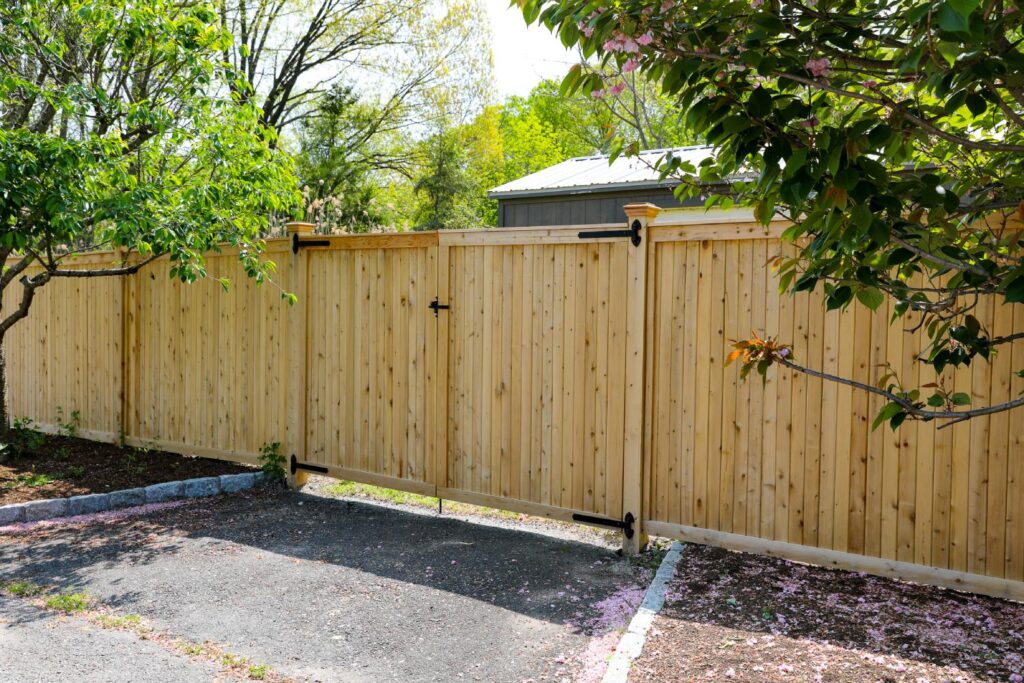All Categories
Featured

A fence is a useful addition to any type of building, supplying protection, personal privacy, and enhancing the total aesthetic appeal of your home or service. Nevertheless, like any kind of exterior structure, a fencing will naturally put on down gradually as a result of direct exposure to the components, accidents, or just age. Recognizing the signs that your fence needs to be replaced can help you stay clear of additional damage and maintain the security and look of your residential property. Here are some essential signs that it's time to change your fencing.

- Noticeable Damage or Deterioration
One of one of the most obvious indications that your fencing needs to be replaced shows up damages. Whether it's from weathering, crashes, or bugs, any type of major cracks, splintering, or missing boards can substantially reduce the architectural stability of your fence. Changing the entire fencing may be much more affordable in the lengthy run. if the damages is extensive and goes past just a few repairs.
- Leaning or Sagging
A drooping or leaning fence is a clear sign of an issue. Also if the fence shows up to be leaning somewhat, it can be an indicator of underlying structural issues that could intensify with time.
- Rotting or Decaying Wood

Wooden fencings are particularly at risk to rot and decay, especially in locations that experience high degrees of wetness or humidity. If you observe that parts of your wood fencing are soft, discolored, or have noticeable mold, these are all indicators of rot. Left uncontrolled, rotting timber can result in a weak fence that might at some point collapse. Sometimes, sections can be replaced, but if the damage prevails, a complete substitute might be essential.
- Corrosion and Corrosion (For Steel Fences)
If you have a metal fencing, deterioration and corrosion are usual indications of wear and tear. If you discover any significant weakening or large areas of rust, it may be time to consider changing your metal fencing.
- Fencing No Longer Satisfies Your Demands
An additional factor to replace your fencing might be that it no much longer serves its designated function. Gradually, your needs may change-- probably you need a higher fencing for more personal privacy or a more powerful one for boosted protection. If your fencing no longer meets your requirements or doesn't straighten with your present choices, it might be time to upgrade to a new, a lot more useful design.
- Fading and Staining
While fading and staining are normally cosmetic concerns, they can still indicate that your fencing is aging. Direct exposure to UV rays and harsh weather can create fences to shed their original color, making them look dull and worn. If the fading is substantial and you've already tried cleaning and staining the fence, it may be time to change it to bring back the look of your residential property.
- Constant Repair Work
If you find on your own continuously repairing your fencing, it could be a sign that the fencing is nearing completion of its life-span. While small repair work can extend the life of a fence, frequent repairs might indicate that the framework is no much longer steady. In this situation, it may be more cost-effective to replace the entire fencing rather than proceeding to purchase repair work.
Final Thought
Replacing a fencing is a significant investment, but it is necessary for maintaining the personal privacy, safety, and aesthetic appeal of your residential or commercial property. If your fencing is showing indicators of damages, rot, leaning, or other architectural concerns, it's essential to assess whether a substitute is necessary. By determining these warning indications early on, you can make enlightened choices about when to change your fencing, guaranteeing your property remains safe and visually appealing for years ahead.
Latest Posts
Find Out Why Chicago Drivers Choose Montclare Auto Repair for Reliable Service and Great Savings
Published May 28, 25
1 min read
Specialist Residential Roof Solutions You Can Count On
Published May 23, 25
1 min read
Uncover Cut Costs on Car Maintenance with Montclare Auto Repair’s Exclusive Deals
Published May 22, 25
1 min read
More
Latest Posts
Find Out Why Chicago Drivers Choose Montclare Auto Repair for Reliable Service and Great Savings
Published May 28, 25
1 min read
Specialist Residential Roof Solutions You Can Count On
Published May 23, 25
1 min read
Uncover Cut Costs on Car Maintenance with Montclare Auto Repair’s Exclusive Deals
Published May 22, 25
1 min read